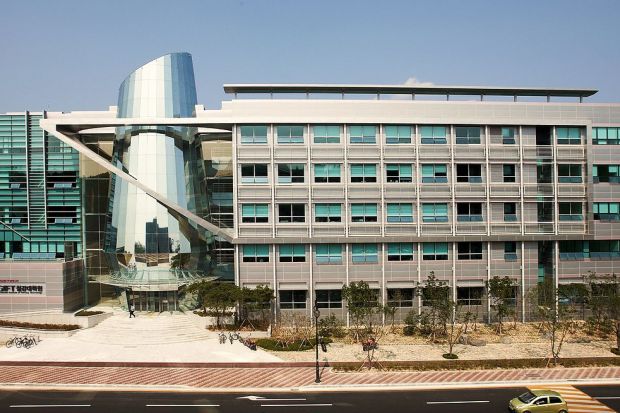POSTECH: Activating Lattice Oxygen in Perovskite Oxide to Optimize Fuel Cell Performance
To optimize the performance of fuel cells, a golden ratio must be found. Recently, a Korean research team has uncovered that the performance of fuel cells varies depending on the Co-doping level. Finding the optimal ratio is anticipated to help maximize the performance of fuel cells in the future.
A research team led by Professor Jeong Woo Han and Ph.D. candidate Chaesung Lim (Department of Chemical Engineering) of POSTECH, in joint research with Professor Yan Chen and Dr. Huijun Chen of South China University of Technology, has confirmed that as the Co-doping level in the perovskite oxide thin film increases, the lattice oxygen is increasingly activated in the film.
Since electrical energy is generated as lattice oxygen – which makes up the thin film – is activated, controlling this can improve the performance of a solid oxide fuel cell (SOFC), which uses the thin film as an anode.
The SOFC consists of an oxygen ion electrolyte and cathode-anode on both sides. On the cathode side, oxygen ions are formed via oxygen reduction. These ions move to the anode via electrolytes and generate water and electricity by reacting with the hydrogen supplied at the anode.
The research team added cobalt of different levels to the perovskite oxide film model using the pulsed laser deposition (PLD) method. As Co-doping level increased, the lattice oxygen activity in the film also increased and improved the performance of the SOFC anode. However, when the Co-doping level exceeded 70%, the stability of the anode rapidly degraded, lowering its performance.
SOFC, which converts chemical energy into electrical energy without emitting harmful gases, can replace fossil fuels that emit pollutants as a by-product. This makes SOFC the optimal alternative for overcoming the climate crisis as it can be used as a source of energy for powerplants that emit lots of carbon.
However, there are many factors that affect the lattice oxygen activity of the SOFC anode, making it difficult to fine-tune it. In this study, Professor Han’s research team has discovered a way to ultimately improve the performance of fuel cells by allowing the lattice oxygen activity to be modulated with the Co-doping level.
“The effect of cobalt-doping level on the performance of SOFC anodes was affirmed with both theory and experiments in this study,” explained Professor Jeong Woo Han. “This signifies that the strategy to develop the best-performing SOFC has been confirmed.”
This joint study was conducted with the support from the Nano Materials Technology Development Program funded by the National Research Foundation of Korea. The findings from were recently published in Advanced Science, an academic journal of the highest authority in the field of materials science.

